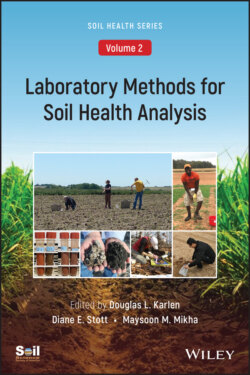Читать книгу Laboratory Methods for Soil Health Analysis, Volume 2 - Группа авторов - Страница 29
Composite Sampling
ОглавлениеComposite sampling can increase sampling accuracy and reduce analytical costs. Briefly, it involves collecting several homogenous samples in an area surrounding a sampling point and combining those samples into a single bulk (or composite) sample (Dick et al., 1996). For effective composite sampling, it is essential that each sub‐sample contributes equally and that there are no interactions among sub‐samples (Boone et al., 1999). Moreover, all sub‐samples must be collected from the same soil type and depth to be homogenous.
Composite sampling can be used with any of the above sampling designs, although it is less suited to systematic sampling because of the fixed sampling point constraints. Also, since multiple sub‐samples are combined and mixed, compositing samples in an area with a wide variation in physical disturbance should be avoided.
